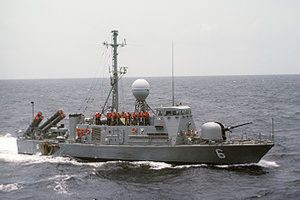“We usually associate the doctrine with France in 1940, or with large elements of the Red Army in the second half of 1941.”
 Aboard the USS Harry Truman, January 13 – Amid escalating tensions with Iran, American naval forces patrolling the Persian Gulf have been ordered to implement a doctrine that calls for stubborn adherence to not doing what they have been trained to do.
Aboard the USS Harry Truman, January 13 – Amid escalating tensions with Iran, American naval forces patrolling the Persian Gulf have been ordered to implement a doctrine that calls for stubborn adherence to not doing what they have been trained to do.
President Obama directed US Navy commanders yesterday to apply his Roll Over And Die doctrine in all encounters with Iranian forces in and around the body of water through which much of the world’s crude oil supply travels. The doctrine, developed by the president and several political advisers over the last decade, calls for the massive firepower and technological superiority of those US forces to shrink from combat contact with any vessel or aircraft representing the Islamic Republic of Iran. Once implemented, Roll Over And Die is expected to become the primary military doctrine of all the US armed forces within two years.
Although Roll Over And die was initially planned for rollout only later this year, the president decided to accelerate its application once ten US Navy personnel and their two fast-attack boats were captured by Iran’s navy yesterday. Fearing that such an act, which could be considered an act of war, might prompt US forces to follow their training and attempt to aid their comrades, Obama immediately ordered American vessels and aircraft in the region to initiate the Roll Over And Die procedure.
Doctrines similar to Roll Over And Die have been used before, but not in recent decades, says military historian John Ellis. “We usually associate the doctrine with France in 1940, or with large elements of the Red Army in the second half of 1941,” he explained. “And that doctrine makes a real difference when applied effectively. Poland, which lacked the advanced military capabilities that France possessed, lasted a mere three weeks against the Wehrmacht in 1939. But France, with its more formidable military, lasted, thanks to a strategy that very much resembled Roll Over And Die, a full seventeen days.”
Where Roll Over And Die differs from 1940 France, explained Ellis, is that the French still maintained an orientation of actual confrontation with the invading Germans, at least initially. Whereas in the current case, he said, “the idea is to avoid the use of the military entirely as anything other than a hugely expensive display of sleek craft, acrobatic airplanes, and colorful ensigns.” Anything that smacks of actually defending American strategic interests, added Ellis, might provoke Iran into rejecting the nuclear deal, which would in turn make the country more belligerent, and prone to taking American servicemen captive.




